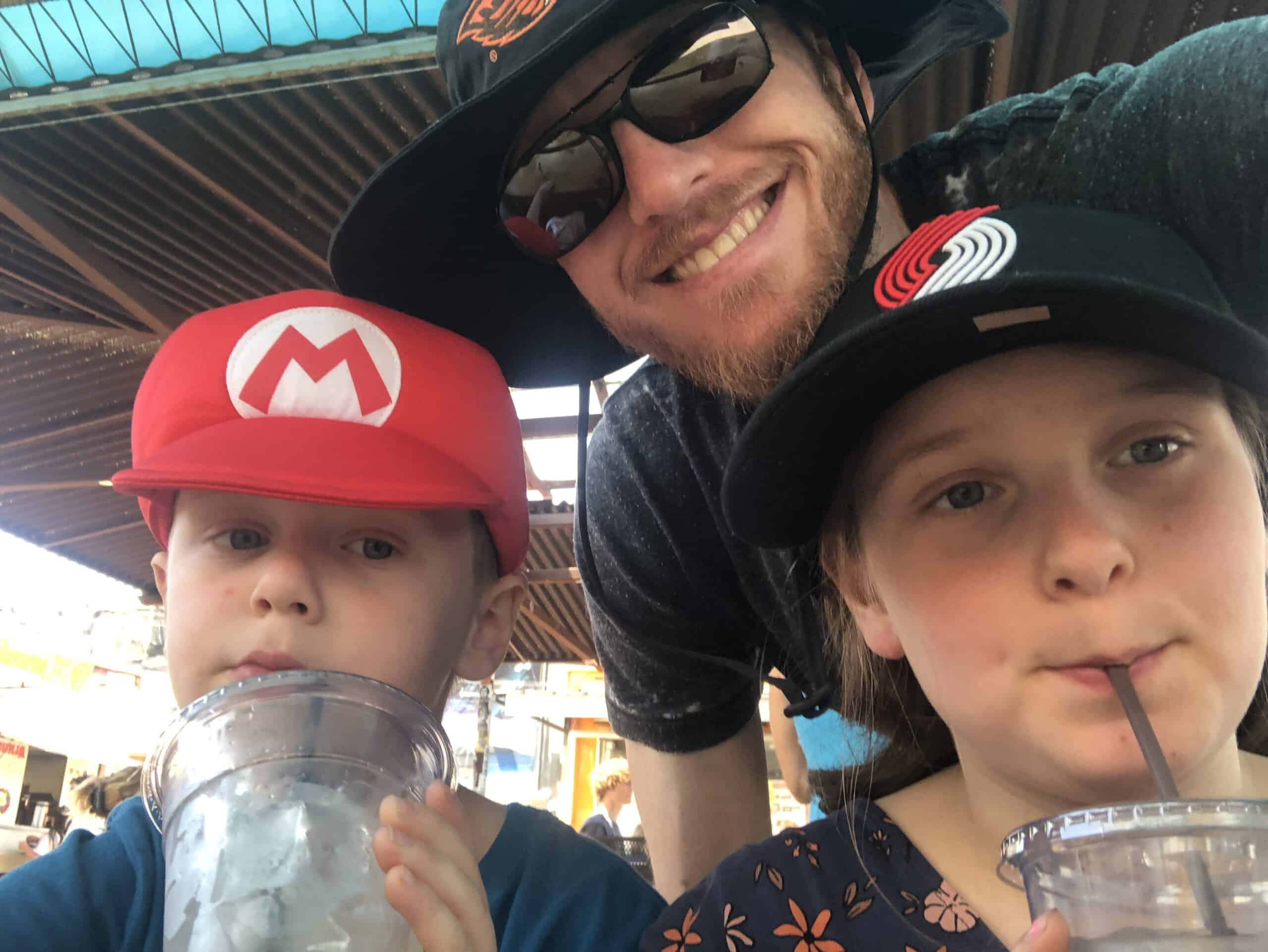The mind-body connection associated with yoga proved lifechanging for Renée Le Verrier. It helped her Parkinson’s so much she decided to become a yoga teacher herself. Now she specializes in yoga for mobility issues.
There’s a common expression that “every cloud has a silver lining,” meaning even the worst events or situations will have some sort of positive impact on our lives. A Parkinson’s diagnosis, for instance, can feel devastating at first, but eventually the storm passes, the clouds part and those silver linings reveal themselves.
For Renée Le Verrier, the silver linings of her Parkinson’s diagnosis came in the form of two massive Great Danes named Tommy and Bryson—her loyal service dogs—along with a newfound appreciation for yoga and the physical, mental and emotional healing effects it has on Parkinson’s disease.
Le Verrier was diagnosed with Parkinson’s in 2004 at the age of 43. She was an editor at a New England publishing company at the time, struggling to wrap her mind around what her future would entail. Denial set in. “I figured if I didn’t see a neurologist, then I could pretend there’s nothing wrong. But that didn’t work,” said Le Verrier.
Once she accepted the diagnosis, Le Verrier dove headfirst into fighting the symptoms and slowing down her disease progression. She went to a place that took a whole-body approach to therapy, including physical therapy, occupational therapy (OT), speech pathology and counseling.
“I said, ‘The only thing you’re missing is yoga,’ and one of the OTs said, ‘And guess who would be a good person to teach that?’ She meant me. I had been practicing yoga for years and recently got back into it for the stretching, thinking it might complement the other therapies,” Le Verrier said.
“So, when the OT suggested I teach it, I decided to shift careers and begin the process of yoga teacher training. The entire time I was training I was filtering what the poses might look like to a person with a movement disorder, as I knew that my specialty would be working with people with mobility issues.”
Yoga and the power of awareness
The more Le Verrier explored the teachings of yoga, the more she understood the connection it fosters between the body and the mind. “If I were to describe yoga in one word, it would be ‘awareness’ because when the mind and body are connected, you are much more alert to where you are and what your body is doing,” she said.
On a physical level, yoga helps alleviate common Parkinson’s symptoms like stiffness, rigidity and dystonia. It can even work wonders for balance and fall prevention. For instance, Le Verrier does a whole series that teaches her students how to fall and get back up.
“The key to falling is knowing how to fall and knowing how to get back up. It’s a huge confidence builder because the reality is that you’re going to fall. I fall at least once a week. But once you know how to fall and get back up, that recovery becomes faster and easier,” she said.
The mind-body awareness that yoga encourages can also help you perform an “inventory check,” as Le Verrier put it, on your mental health and emotional well-being. “It helps you remember that in this moment, right now, everything is OK. Or, in this moment, I feel frustrated, but I won’t feel this way forever,” she said.
“I’m moving into my fourteenth year of Parkinson’s, and when the medications aren’t working so well I notice mood changes. I might feel anxious, blue or angry. Instead of riding the rollercoaster of emotions, yoga has made me more aware of how the medication cycle affects my mood. I realize, ‘I’m really not sad. It’s just time for another dose.’”
Great Danes make great canes
One day, a student walked into one of Le Verrier’s yoga classes with a giant Great Dane in tow. “Down,” her student commanded, and the service dog immediately folded down on the ground with the grace of a ballerina. Le Verrier was fascinated.
“I thought, ‘Why have a cane when you can have a giant dog?’ I didn’t need a cane at the time, but when I started thinking about it, I knew that training a dog takes time. Perhaps if I got a dog sooner than I actually need one, it would give me enough time to work with the dog. I quickly learned that there is nothing better than having a fuzzy, four-legged cane.”
Le Verrier got Tommy at an Ipswich, Massachusetts, nonprofit called Service Dog Project that trains Great Danes to assist people with movement disorders like Parkinson’s, multiple sclerosis and cerebral palsy.
Putting her safety in the paws of a dog that outweighed her by 50 pounds intimidated Le Verrier at first. But one look into Tommy’s soulful eyes and she was a goner. “I love my husband, but this dog is with me all the time,” she joked. She wrote about their adventures in her book, “Travels with Tommy: Stories of Life with a Service Dog.”
Le Verrier and her family relocated to Whidbey Island, Washington, in the fall of 2015 to escape the New England winters. Tommy has since retired. “He’s 8 years old and getting a little creaky. At this age, it’s not really fair for him to have to support my weight along with his own,” Le Verrier explained.
She now has a second service dog named Bryson, a behemoth of a Great Dane who weighed 155 pounds when he was still a puppy. “We’re at the beginning stages of our working together,” Le Verrier said. “They have very different personalities but seem to get along fine with each other and with our little rescue dog. Tommy knows he’s still the top dog even though he’s retired.”



